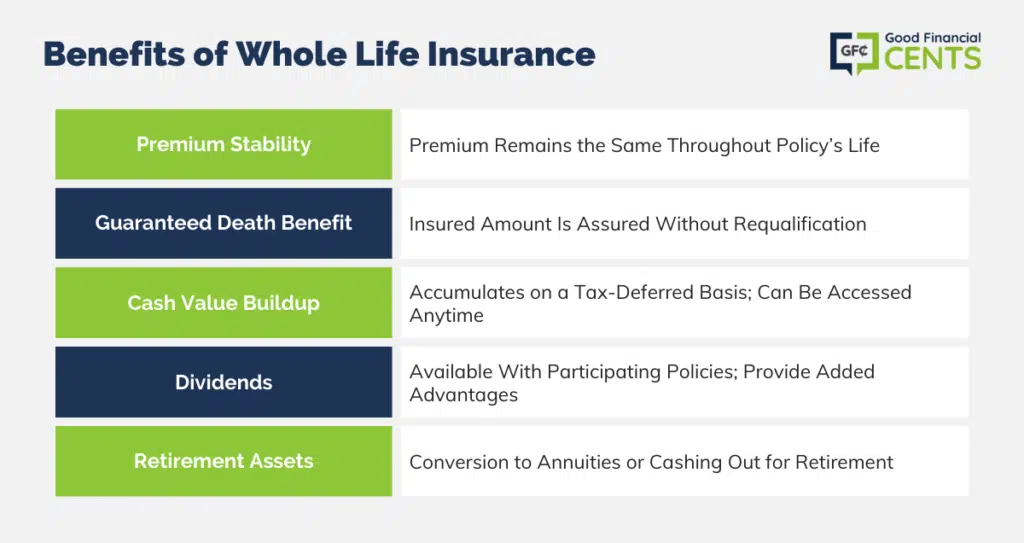Counter-Suing in Car Accident Cases
When someone is injured in a car accident, they may file a personal injury lawsuit against the at-fault driver. However, in some cases, the defendant may choose to file a countersuit against the plaintiff. A countersuit is a lawsuit that is filed by the defendant in response to the original lawsuit.
What is a Countersuit?
Countersuits are typically filed when the defendant believes that the plaintiff is at least partially responsible for the accident. For example, if the plaintiff was speeding or driving under the influence of alcohol, the defendant may file a countersuit alleging that the plaintiff’s negligence contributed to the accident. The countersuit should contain specific facts. Merely asserting negligence is not enough. Additionally, the facts within the counterclaim must support the relief sought.
Countersuits can be used to seek a variety of remedies, including compensatory damages, punitive damages, and injunctive relief. Compensatory damages are intended to compensate the defendant for the losses they suffered as a result of the accident. Punitive damages are intended to punish the plaintiff for their wrongful conduct. Injunctive relief is a court order that requires the plaintiff to do or refrain from doing something. For example, a court may issue an injunction prohibiting the plaintiff from driving if they were found to be driving under the influence of alcohol.
Countersuits can be a powerful tool for defendants in car accident cases. However, it is important to remember that filing a countersuit is not always the right decision. If you are considering filing a countersuit, it is important to speak to an experienced attorney to discuss your options.
Benefits of Filing a Countersuit
There are several potential benefits to filing a countersuit in a car accident case. First, a countersuit can help to level the playing field. If the plaintiff has filed a lawsuit against you, filing a countersuit can help to put you on more equal footing. Second, a countersuit can help to protect your rights. If the plaintiff is seeking damages from you, filing a countersuit can help to ensure that you are not held liable for more than your fair share of the damages.
Finally, a countersuit can help to send a message to the plaintiff that you are not going to be taken advantage of. If the plaintiff is trying to bully you into settling their case for less than you deserve, filing a countersuit can show them that you are not going to back down.
Drawbacks of Filing a Countersuit
While there are several potential benefits to filing a countersuit, there are also some potential drawbacks. First, countersuit can be expensive. Filing a countersuit can require you to pay for court costs, attorney fees, expert witnesses, and other expenses.
Second, countersuit can be time-consuming. Filing a countersuit can delay the resolution of your case for months or even years. Finally, filing a countersuit can be stressful. Litigating a lawsuit can be a stressful experience, and filing a countersuit can add to the stress.
Counter Suing in a Car Accident: When to Fight Back
Imagine if you were driving along, minding your own business, when suddenly, out of nowhere, a reckless driver rear-ends you. Your car is damaged, your body is hurting, and you’re feeling shaken up. To make matters worse, the other driver is trying to pin the blame on you. In this frustrating situation, filing a countersuit might be your best move.
When to File a Countersuit
Filing a countersuit isn’t something to take lightly. It’s a serious legal move that can have significant consequences. But if you believe you have a strong case and you’re prepared to fight for your rights, it may be the right option for you.
In general, you may want to consider filing a countersuit if:
You Believe You’re Not at Fault for the Accident
If you believe you’re not at fault for the accident, filing a countersuit can help you clear your name and protect your rights. This is especially important if the other driver is trying to blame you for the accident or if they are claiming that you were partially at fault.
To prove that you’re not at fault for the accident, you’ll need to gather evidence to support your case. This can include witness statements, police reports, and photos of the damage to your car.
Counter-Suing After a Car Accident: A Guide for the Counter-Claimant
Victims of car accidents often face significant injuries, financial losses, and emotional distress. What many don’t know, however, is that in certain circumstances, they have the option to counter-sue the other driver involved in the accident.
Filing a countersuit allows victims to seek compensation for their losses and damages while simultaneously defending themselves against the initial claim.
How to File a Countersuit
If you’re considering filing a countersuit, the first step is to gather evidence to support your claim. This can include medical records, witness statements, and police reports. Once you have gathered your evidence, you will need to file a document with the court called an answer and counterclaim. This document should include a detailed description of your injuries, damages, and the grounds for your counterclaim.
What to Include in Your Countersuit
Your countersuit should include a concise statement of the facts of the case, including the date, time, and location of the accident. It should also include a description of your injuries, damages, and the losses you have incurred as a result of the accident. Finally, your countersuit should specify the amount of compensation you are seeking from the other driver.
Proving Your Claim
In order to prove your claim, you will need to present evidence to support your allegations. This evidence can include medical records, witness statements, and photographs of the accident scene. You may also need to testify on your own behalf.
Defending Yourself Against the Initial Claim
In addition to filing a countersuit, you may also need to defend yourself against the initial claim filed against you. This can involve filing an answer to the complaint, attending court hearings, and presenting evidence on your own behalf. It’s important to remember that the burden of proof is on the plaintiff (the person who filed the initial claim) to prove their case. As the defendant, you have the right to defend yourself and present evidence to support your version of events.
Working with an Attorney
If you are involved in a car accident and considering filing a countersuit, it is important to consult with an attorney. An attorney can help you gather evidence, file the necessary paperwork, and represent you in court. An attorney can also provide you with valuable advice and guidance throughout the legal process.
Counter Suing in a Car Accident: A Comprehensive Guide
In the aftermath of a car accident, you may find yourself facing a lawsuit from the other driver. While it can be a stressful and confusing time, it’s crucial to understand your options and rights. One potential strategy is to file a countersuit, which allows you to seek compensation for the damages you have suffered as a result of the accident.
What is a Countersuit?
A countersuit is a legal action filed in response to an initial lawsuit. In the context of a car accident, it allows you to assert your own claims for damages and hold the other driver responsible for their negligence. Filing a countersuit can be a powerful tool to protect your rights and ensure that you receive fair compensation for your injuries and financial losses.
Reasons for Filing a Countersuit
There are numerous reasons why you might consider filing a countersuit following a car accident. Some common reasons include:
- To seek compensation for your injuries, medical expenses, and other financial losses
- To hold the negligent driver accountable for their actions
- To deter the other driver from filing frivolous lawsuits in the future
li>To ensure that you receive fair treatment in the legal process
What to Include in a Countersuit
Your countersuit should clearly state your claims and provide supporting evidence. It should include:
- A statement of your injuries and their severity
- A description of the accident, including the date, time, location, and circumstances
- Evidence to support your claims, such as medical records, witness statements, and photographs
- A demand for damages, which can include compensation for medical expenses, lost wages, pain and suffering, and other expenses related to the accident
Procedure for Filing a Countersuit
The procedure for filing a countersuit varies depending on the jurisdiction. Generally, you will need to file a response to the initial lawsuit and include your countersuit within the response. It’s important to consult with an experienced personal injury attorney who can guide you through the process and ensure that your countersuit is filed correctly.
Counter Suing in Car Accidents: A Guide to Filing a Countersuit
After a car accident, the initial instinct is often to file an insurance claim against the at-fault party. However, what if you believe you were not responsible for the accident? In such cases, you may consider filing a countersuit to assert your claim. This article will delve into the pros and cons of filing a countersuit in a car accident, providing valuable insights for those contemplating this option.
Pros and Cons of Filing a Countersuit
Filing a countersuit can have both advantages and disadvantages. It’s crucial to weigh these factors carefully before making a decision.
Advantages of Filing a Countersuit
Filing a countersuit can provide several benefits. First, it allows you to seek compensation for your damages. This includes medical expenses, lost wages, pain and suffering, and property damage. Second, a countersuit can help you establish liability. By proving that the other party was responsible for the accident, you can increase your chances of recovering compensation. Third, a countersuit can put pressure on the other party to settle. The threat of a lawsuit can often lead to favorable settlements.
Disadvantages of Filing a Countersuit
Filing a countersuit also comes with potential drawbacks. First, it can be costly and time-consuming. Litigation can be a lengthy and expensive process, especially if the case goes to trial. Second, filing a countersuit can damage your relationship with the other party. Litigation can create animosity and make it difficult to resolve the dispute amicably. Third, there’s no guarantee of success. Even if you file a strong countersuit, there’s no guarantee that you will win.
Factors to Consider When Filing a Countersuit
Before filing a countersuit, it’s important to consider the following factors:
The strength of your case. You should have a strong case for liability before filing a countersuit. This means having evidence to prove that the other party was responsible for the accident. The amount of damages you are seeking. You should carefully calculate the damages you have suffered as a result of the accident. This includes both economic damages, such as medical expenses and lost wages, and non-economic damages, such as pain and suffering. The cost of litigation. Litigation can be expensive. You should carefully consider the cost of filing a countersuit before proceeding. The potential risks. Filing a countersuit can damage your relationship with the other party and can also lead to unfavorable outcomes. You should carefully weigh the risks before filing.
Conclusion
Filing a countersuit in a car accident is a complex decision. There are both pros and cons to consider. You should carefully weigh the factors discussed above before making a decision. If you decide to file a countersuit, it’s important to have a strong case, seek legal advice, and be prepared for the potential risks and costs involved.
Countersuing After a Car Accident: What You Need to Know
If you are involved in a car accident that was not your fault, you may be considering filing a lawsuit to recover damages. In some cases, the other driver may file a countersuit against you, claiming that you were at fault for the accident or that your damages are exaggerated. If you find yourself in this situation, it is important to understand your rights and options.
What Is a Countersuit?
A countersuit is a lawsuit that is filed in response to an original lawsuit. In a car accident case, the plaintiff (the person who filed the original lawsuit) is typically seeking to recover damages from the defendant (the person who is being sued). If the defendant believes that the plaintiff is at fault for the accident or that the plaintiff’s damages are exaggerated, they may file a countersuit to seek damages from the plaintiff.
Determining Fault in a Car Accident
Determining fault in a car accident can be a complex process. In most states, fault is based on the concept of negligence. Negligence is defined as the failure to exercise reasonable care to avoid harm to others. In a car accident case, a driver may be found negligent if they failed to obey traffic laws, were driving while intoxicated, or were otherwise careless or reckless.
What to Do If You Are Served with a Countersuit
If you are served with a countersuit, it is important to take the matter seriously. You should immediately contact an attorney to discuss your options. Your attorney will be able to review the countersuit and advise you on the best course of action.
Alternatives to Filing a Countersuit
There are other options available to you if you do not want to file a countersuit. You can negotiate with the other driver’s insurance company or you can file a claim with your own insurance company.
Negotiating with the Other Driver’s Insurance Company
Negotiating with the other driver’s insurance company is often the simplest and most cost-effective way to resolve a car accident claim. You can negotiate directly with the insurance company or you can hire an attorney to represent you. If you are able to reach a settlement agreement with the insurance company, you will avoid the need to file a lawsuit.
Filing a Claim with Your Own Insurance Company
If you are unable to reach a settlement agreement with the other driver’s insurance company, you may want to consider filing a claim with your own insurance company. Your own insurance company may be able to provide you with coverage for your damages, even if you were at fault for the accident.
Conclusion
If you are involved in a car accident that was not your fault, it is important to understand your rights and options. You may be able to recover damages from the other driver by filing a lawsuit. If the other driver files a countersuit against you, it is important to take the matter seriously and contact an attorney immediately.




Leave a Reply